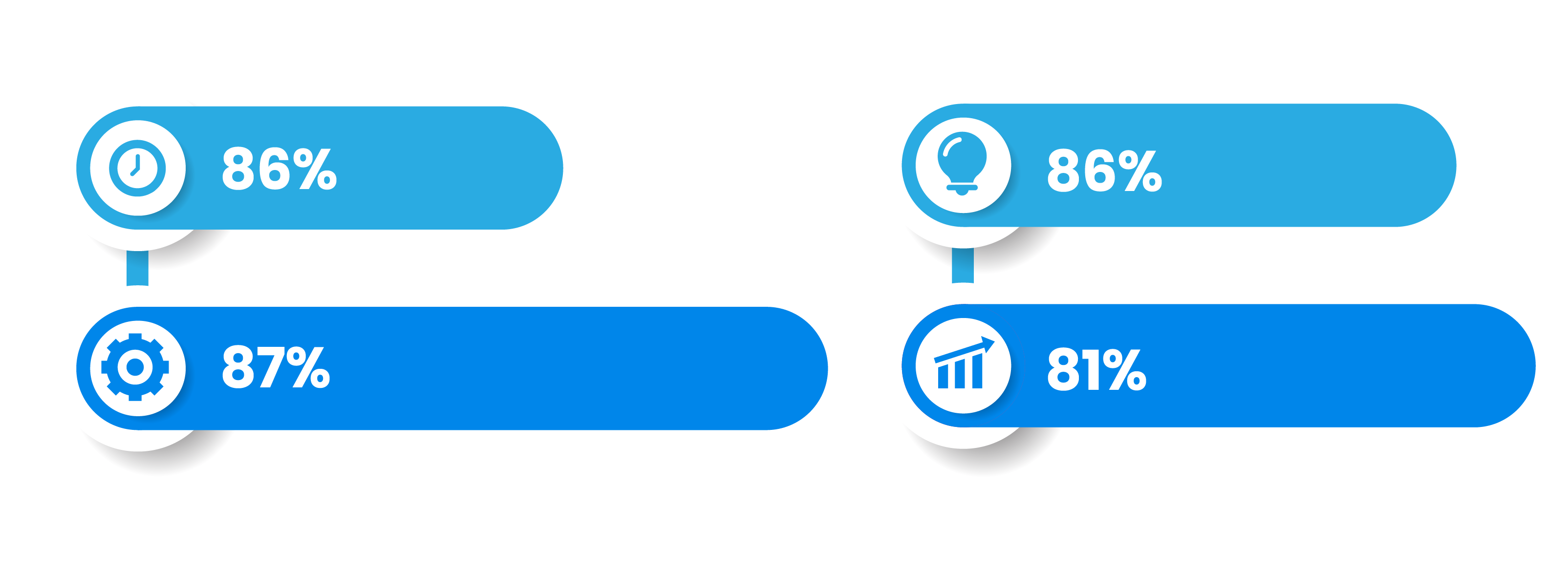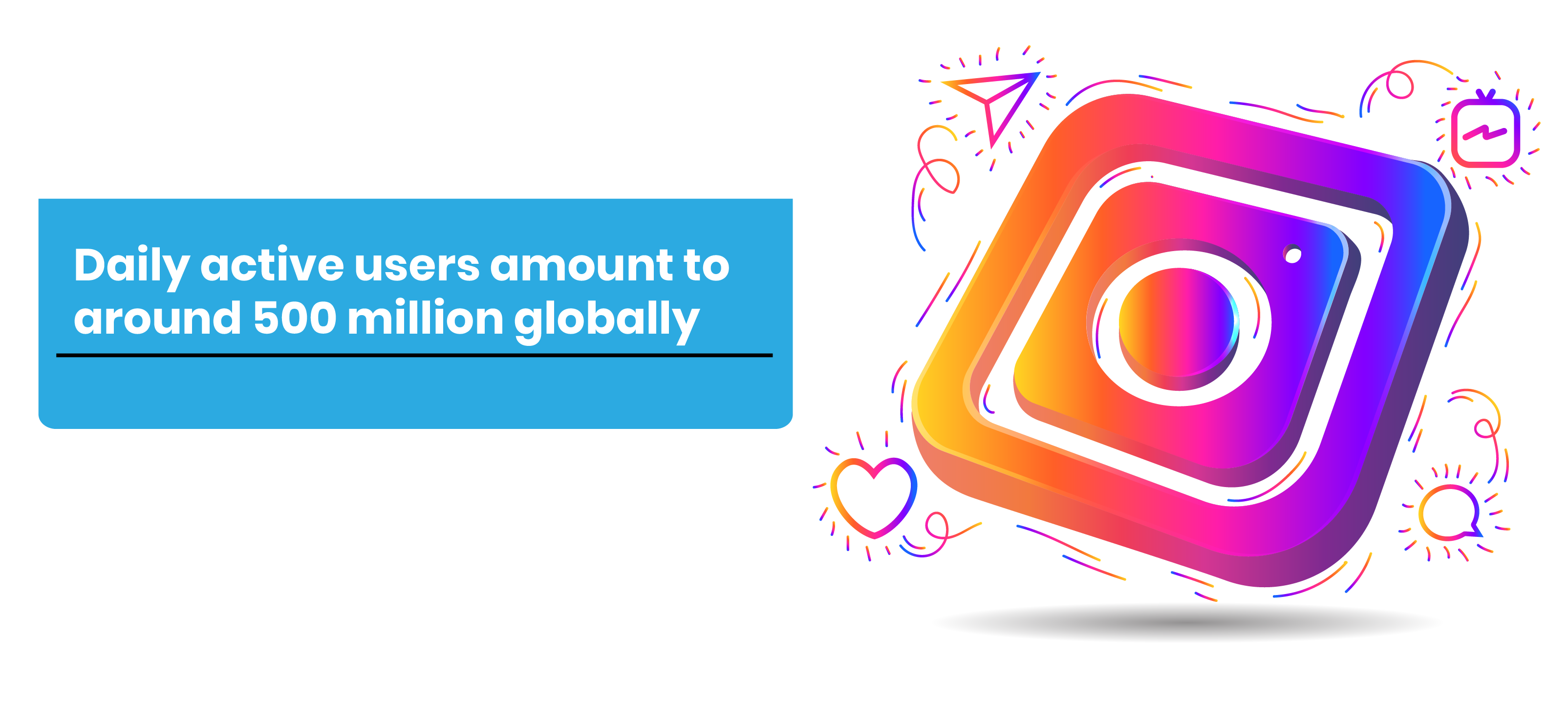Video Marketing Statistics 2022
Video content has become an integral part of our day-to-day lives. Videos are used in education and training, are incredibly popular in entertainment, and are used by both companies and customers to inform commercial behaviours. Nowhere is this extensive use more apparent than on YouTube. In this article we take a look at some of the compelling video marketing statistics 2022
YouTube is a platform with an enormous user base. Boasting a monthly user base of over 2.4 billion active users in 2022 [Statista], YouTube takes the top spot as the largest search engine for video content, with the number only expected to grow. This figure isn’t terribly far from Google’s monthly active users, being in excess of 2.65 billion. [Backlinko] As such, YouTube can not only claim to be the greatest video search engine, but one of the greatest search engines in general.

YouTube’s immense popularity shows an apparent demand for video content. People enjoy video content for a wide range of reasons. If properly used, it can provide significant benefits to your business.
But stating that isn’t enough. To prove why video is the future of marketing, and why it warrants your investment, we have compiled an extensive list of the most impactful video marketing statistics. They will speak for themselves, showing exactly how video content performs, the demographics of those that watch it, and the implications it can have on your business.

An overview of video marketing statistics
Video marketing is a pretty broad term, referring to a wide range of practices and tools. This versatility has seen it used by many businesses. Whether it be to bolster their social media presence, or provide their audience with an engaging method of learning about a product. Informing your audience can be done through a wide variety of video content. With one of the main types being explainer videos.
Before we delve into video marketing statistics, we’ll first outline what an explainer video is. Put simply, it’s a short video, usually no more than 2 minutes, that aims to bring its viewers up to speed efficiently, and with an emphasis on engagement. Explainer videos are perfect for capturing the attention of their viewers, and delivering a memorable message.
In addition to this, explainer videos are the ideal type of video content for social media. Explainer videos don’t require much time from their viewers. With a bit of creativity, they can be rapidly shared across a social media platform. As social media is an integral part of marketing, this is no small feat. These qualities make explainer videos well suited to marketing, with many businesses using them in their video marketing campaigns.
In fact, you have almost certainly come across an explainer video or two on T.V, as an ad on a video, or elsewhere. Though we’d love to continue singing the praises of explainer videos, we’ll get on to the main course – video marketing statistics. If you’d like more on explainer videos, check out our blog and get your questions answered.
For our first set of stats, we’ll go over the broad usage of video marketing, and video content. Including the volume of use by businesses, the effect it has on driving traffic, and the amount of influence video has over our day-to-day.

- Business use: One of the most telling video marketing statistics is the percentage of businesses that use it, namely 86%, according to a survey conducted by Wyzowl. This vast majority speaks volumes, tacitly supporting the effectiveness of the relatively new medium of video content.
- Increase in use by businesses: According to the same survey, there has been a steady increase in the adoption of video marketing by businesses over the years. In 2021, 18% of video marketers reported using video for the first time. Since 2016, there has been a 41% increase in businesses using video in their marketing strategies. Clearly, the use of video is on the rise.
- Reasons behind the adoption of video marketing: There is an apparent increase in the use of video marketing by businesses, but why exactly is this the case? Put simply, it is due to the success that video content brings to the table. For example, 87% of marketers say that video has helped to increase traffic, 86% say video has improved lead generation, and 81% cite video as a core reason for the increase in sales. In short, the benefits speak for themselves.
- Your audience is online: In 2022, more than 3 billion people will use the internet to watch video content. This figure is expected to surpass 3.5 billion in 2023. [Statista] With so many people turning to the internet for video content, harnessing video as a marketing tool isn’t just beneficial; it’s necessary.
- Watch time: Dovetailing with the previous stat, the average person is an avid viewer of video content. Regardless of demographic, video has taken the crown as our main source of entertainment and information. American children, for example, have increased their screen time by as much as four times, watching video content for almost 5 hours a day. [Source] A more general survey collected data on an older age group of 18 and up. 27.2% of the survey’s respondents report watching video content for more than 10 hours a day, with 20.6% reporting a watch time of 1-2 hours a day. [Statista] The rest fall somewhere in between. These data points show that in addition to being used by an enormous number of people. Video content is very much a fixture in the life of the average person.
- Type of content watched: When marketing to a specific target audience, it can pay to understand what they like to watch. A survey found that some types of online content were much more popular than others. Social media content, for example, has a watch time of 4 hours, whereas sports has a surprising 2.4 hours. [Statista]
- Online video influences in-person purchases: In addition to having a significant effect on the digital sphere, video content also impacts commercial habits in the real world. On a global scale, 55% of shoppers report using online videos, despite shopping in a brick and mortar store. [Source] Clearly, the reach of video content is long.
- Retention rate using video: It isn’t so surprising that video is so widely both online and offline. According to Forbes, viewers of video content retain 95% of its message, a stark increase when compared to other mediums. Needless to say, such a degree of information retention is crucial when making an informed buying decision.
- Visitors stick around longer if your site has videos: It should now be clear that video content strikes a chord with the average person. So much so, that if your website has video content, you can expect your visitors to keep browsing 88% longer than if it didn’t. [Source]
- Video marketing helps users understand a product or concept: Most people learn best through visual means, making it no surprise that 94% of video marketers have noticed an increase in user understanding of a product or service on offer. [Source]
Video marketing statistics: Return on investment
Our next set of video marketing statistics is focused on what results video marketing can bring to your business. By implementing video marketing in your campaigns, you could see benefits ranging from an increase in traffic and sales, to improved brand visibility. Let’s take a look at some stats.
- Video is convincing: One of the most important stats to know is that video can be a core component to converting your audience into paying customers. According to Google, more than 50% of shoppers say that video is what spurred them to buy a product, or even opt for a particular brand. [Source] As that same article later states, video can be the deciding factor when a potential customer is on the fence. If video content is coupled with other forms of marketing, this good chance of success can be made even greater.
- Video marketing increases brand awareness: Overwhelmingly, video marketers credit video with increasing brand awareness. The figure is staggering, with 93% of polled video marketers saying that video had helped with this aim. [Source]
- Video is effective for customer education: 49% of video marketers state that video has led to the reduction of support calls. [Source] This is due to some of the benefits we’ve mentioned before. Including improved information retention and an increased understanding of the subject matter.
Video content was helpful during the pandemic: The pandemic has highlighted the weak spots in existing business practices and marketing approaches. Video marketing has addressed many of the shortcomings, with 75% of marketers saying that the pandemic made them more likely to turn to video content to fulfill their marketing needs. [Source]

- Video marketers tout video content as having the best ROI: Video marketing has been great at providing businesses with a good ROI, with 87% of marketers stating as such. [Source]
Video marketing statistics – social media
Video marketing and social media are closely connected. Videos, especially short ones, are perfect for being shared online. More specifically, social media is the ideal place for cultivating an online presence and getting your video content shared. Who knows, it might even go viral.
Though the benefits of using social media in marketing are clear, the extent to which you should invest isn’t always quite so obvious. Let’s take a look at some video marketing statistics that can inform how much a role social media should play in your campaigns.
General social media statistics
Social media is a giant, playing a pivotal role in both marketing, and our own personal lives. Understandably, with such a staggering influence, and a significant number of platforms to use, distilling social media down into a small group of statistics doesn’t do it justice. For our first bout of social media video marketing statistics, we’ll be focusing on an overview.
- Most used social media platforms by video marketers: Though every social media platform has its advantages, the majority of video marketers focus on a small selection. Unsurprisingly, YouTube is the most widely used, with 88% of video marketers factoring it into their marketing campaigns in 2022. LinkedIn is tied with Instagram for the second most popular spot, with 68% of video marketers using the platforms. Facebook comes next, with 65% of video marketers including it in their campaigns. The fourth and fifth most popular are TikTok and InstagramTV, used by 33% and 30% of video marketers, respectively. [Source]
- Number of social media users: As of July 2021, roughly 4.48 billion people use social media, amounting to 60.99% of the global population. [Source Backlinko] Though this number shows explosive growth over the prior decade. With 970 million people using social media in 2010, this speed cannot be maintained. The main bottleneck is populations that lack particular gadgets or reliable internet access, both of which are needed to make social media a fixture in daily life. Once these have been made available, however, a sharp but short uptick is likely to occur.

- Number of platforms used: On average, the standard social media user will be active on 6.6 social media platforms.
- Time spent on social media: In 2022, people will spend 147 minutes a day on social media. This is a two-minute increase from the start of the pandemic, and a marked increase compared to the years prior.
- Percentage of social media users: Of the billions that use the internet, a staggering 93.33% use social media. [Source]
Video marketing statistics for YouTube

YouTube is the leading search engine for video content, boasting a user base of over 2.4 billion users. This staggering audience makes the platform a prime location for video marketing.
Regardless of the size of your business, YouTube can be an excellent place to grow your online presence. Small businesses can leverage the inherent benefits of video content to take advantage of YouTube’s enormous user base. Attracting only a fraction would result in a considerable audience for any business, no less a small one. For large businesses, the already established brand can be used to quickly gain a sizeable audience. Something that can help push your brand outside its usual sphere and into a new group of viewers. In short, YouTube has something for everyone.
The benefits that YouTube can provide to marketing have not gone unnoticed by businesses, with many incorporating the platform into their campaigns. Any niche or industry can be found on YouTube. Be it through an official channel making content, or a series of ads on the videos of other content creators. With all that said, let’s delve into some YouTube video marketing statistics.
- Limitless content: Demonstrating the sheer size of YouTube is the volume of content uploaded. Every minute, an astounding 500 hours of content is uploaded. That amounts to an equally shocking 720,000 hours of content every single day. [Source]
- Hours of content watched: What’s more staggering than the volume of content uploaded to YouTube is the volume of content watched. In 2017, YouTube announced that over one billion hours of video content was being watched on their platform every single day. [Source] Given that the platform has only grown since then, there’s no doubt that the figure has only risen. The only question is by how much, though we will have to wait until another milestone is broken to find out.
- Demographics of YouTube: As of January 2022, 53.9% of all YouTube users are male, and 46% are female. In the U.S, 81% of adults use YouTube. This is considerably larger than the second most used platform Facebook, with 69% of adults signed up. Each age group uses the platform to different degrees, with the youngest using YouTube the most. 95% of 19-29 year olds use YouTube, closely followed by 91% of 30-49 year olds. Roughly 82% of adults aged 50-64 use the platform, and 49% of adults aged 65 and over use YouTube.
- Impact on purchasing decisions: YouTube has a considerable impact on a potential customer’s decision to purchase a product or avoid it. 87% of shoppers on YouTube say that they can make a decision quicker thanks to YouTube content. Influencers also play a key role in creating a favourable outcome for your business, with 89% of viewers saying that they can trust the recommendations of YouTube content creators. [Source]
- Confidence of video marketers: YouTube is a platform held in high confidence by many video marketers. According to a survey conducted by Animoto, 84% of video marketers are confident that YouTube will drive views, 81% engagement, and 79% purchases.
Video marketing statistics for LinkedIn

Though perhaps not the first platform that would spring to mind when considering marketing your brand, LinkedIn can offer valuable benefits that other platforms simply aren’t built to provide. While LinkedIn is known for connecting professionals, it has since evolved into a platform that can be used to discover content and information that could prove vital to a successful marketing campaign.
Let’s take a look at some stats.
- Number of users: LinkedIn boasts a notable user base of 810 million across 200 worldwide. The country with the most LinkedIn users is the U.S, with over 185 million people signed up. [Source]
- U.S marketers: LinkedIn has been steadily growing in popularity with U.S marketers. As of 2021, 50.3% of U.S marketers use the platform, according to eMarketer.
- Influences B2B cooperation: LinkedIn is a platform with a large population of business decision-makers. According to their own estimates, LinkedIn is home to over 65 million. As 55% of these business decision-makers vet potential business relationships through LinkedIn. The platform can prove useful for cultivating those B2B connections.
- Most popular for B2B marketing: B2B content marketing already sees wide use, and is set to become more prevalent throughout 2022. According to the Content Marketing Institute, LinkedIn is the platform most used by marketers. Both for paid and organic content marketing. LinkedIn is used by 75% of marketers for paid marketing. While an overwhelming majority of 93% of marketers use the platform for organic content marketing. [Source]
- Impact on revenue generation: As a result of B2B marketing on LinkedIn, 43% of marketers credit the platform as having generated revenue. For reference, the relevant page is 19.
Video marketing statistics for Instagram

Instagram is an incredibly popular, if somewhat niche, social media platform. Unlike YouTube, Instagram places more emphasis on images and shorter form video content. As such, it can be the perfect platform to market products and services that benefit most from short, snappy content. Let’s consider some Instagram statistics, and find out whether the platform is a good fit for your business.
- Number of users: Instagram erupted in popularity in 2021, with the number of monthly active users soaring from 1 billion in 2018 to 2 billion in December 2021. [Source] Daily active users amount to around 500 million globally. More than solidifying the platform’s place as one of the social media giants. [Source]
- Key demographics of Instagram: Instagram is a favorite amongst generation Z, and the young in general. Over one third of generation Z say that Instagram is their favorite social media platform. With two-thirds of the generation using it in some capacity. As for age groups, 75% of the 18-24 age group use the platform, along with 57% of the 25-30 age group. Gender demographics are mostly even, though they lean toward a female majority. 51.4% of females globally use the platform, while 48.6% of males do. The balance changes significantly when considering only the U.S market. Only 36% of males use Instagram, while 44% of females do. Clearly, Instagram should be a priority platform for any business intending to market to the younger generations. [Source]
- Video engagement: Despite its origins as an image-based platform, Instagram users engage with video content the most. Globally, users will interact the most with video. With an average of 24.25 comments per video, and 1097.95 likes per video. Oddly enough, image-based content sees the least engagement. With an average of only 14.65 comments per image, and 476.15 likes per image. [Source] This shows that video marketing is more than viable on Instagram, despite the platform’s image-oriented roots.
- Most users follow businesses: According to Instagram’s own statistics, 90% of the platform’s user base follows a business. For brands looking to boost visibility, it would be tough to find another social media platform that could rival such an openness toward businesses.
- Builds interest in brands: Following the previous stat, 50% of Instagram users are more interested in a brand when they come across its ads on the platform. Coupled with the above, this makes Instagram an excellent platform to build interest in and engagement with a brand.
Wrapping up
Video marketing is an incredibly effective for achieving your marketing goals. It is inherently more engaging than the rivalling methods of marketing, allowing businesses to cultivate a far more interested and engaged audience than through other methods. What’s more, video marketing blends perfectly with social media. Allowing brands to reap the many benefits from both video marketing and social media simultaneously.
Due to its advantages, the continuous growth of video marketing should come as no surprise. An ever-growing number of people are turning to video as a means of entertainment and informing their buying decisions. Prompting marketers to do the same in equal measure. As such, the already favorable video marketing statistics are expected to only change for the better. Now is the ideal time to jump on the video marketing train.

